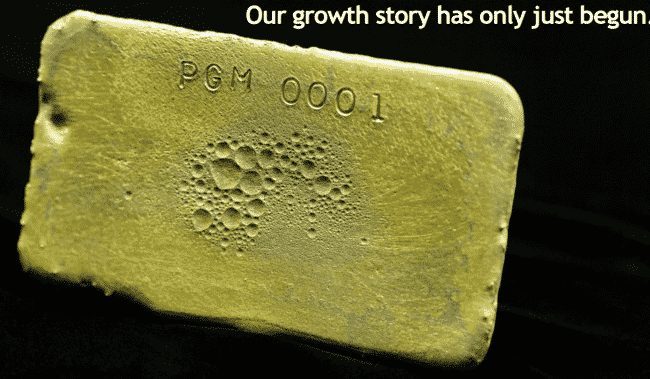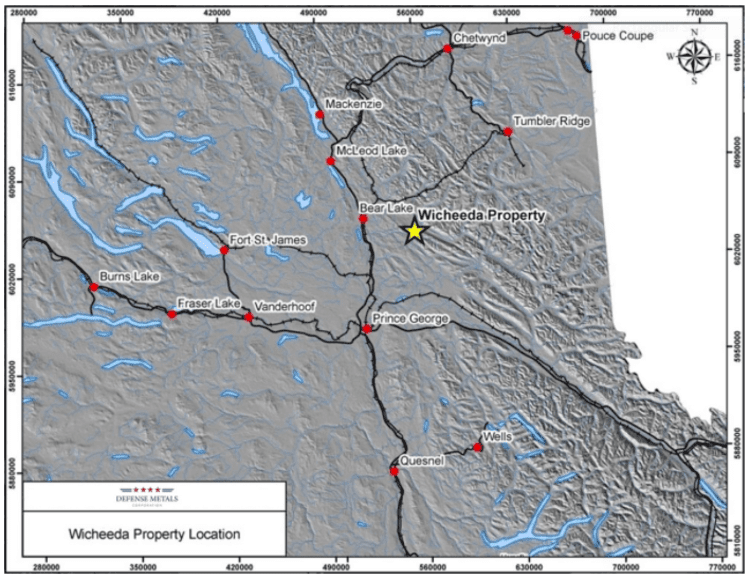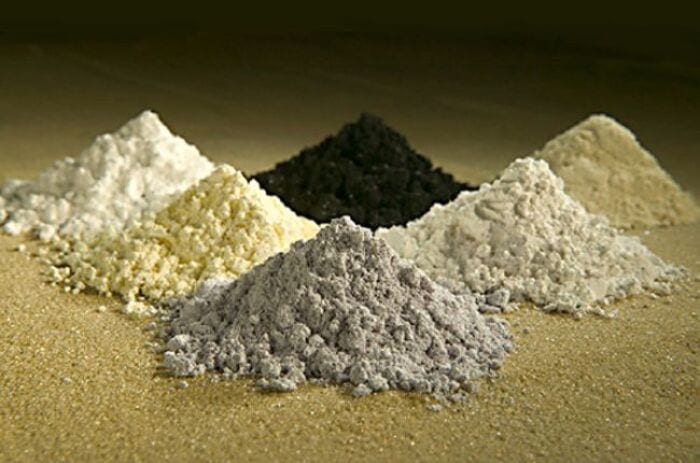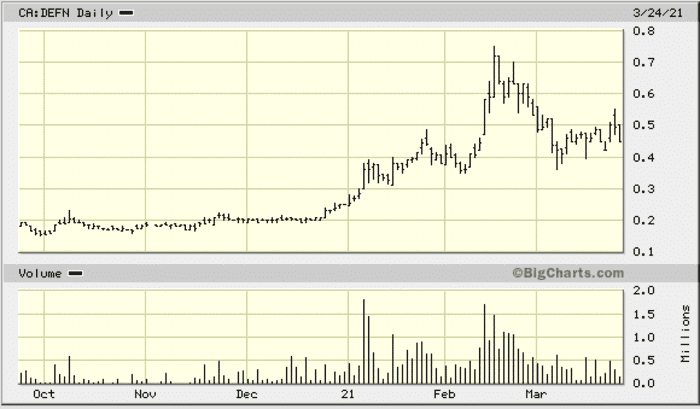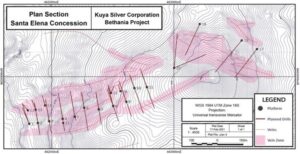The junior exploration arena has sprung back to life in recent sessions.
Two companies on the Highballer shortlist tagged significant highs in recent sessions.
Forum Energy Metals (FMC.V)…

Prime Mining Corp (PRYM.V)…

This episode of Highballer will bring many of the companies on our shortlist up-to-date.
Defense Metals (DEFN.V)
Yesterday, on March 23rd, Defense dropped an important headline—one I’ve been eagerly anticipating as I monitor developments from the sidelines.
Leading up to this news event, in a recent interview with Defense Metals’ CEO, Craig Taylor, I asked…
“Back in February, you engaged Welsbach Holdings to assist you in a number of areas. What are your expectations—what do you hope to achieve from this partnership?
CEO Taylor’s reply:
“Welsbach has ties in Singapore, Japan, Korea, Europe, Australia, and China. They’re connected to every smelter, every end-user in the space. They’ll serve as a key broker, moving us forward in securing MOUs for offtake agreements. They see the upside in what’s happening globally.”
Naturally, I followed that query with another, looking for specifics:
“You probably can’t answer this, but are there any names, any end-users in the space that have expressed interest in your REE concentrate?”
CEO Taylor’s reply:
“No. I can’t give you any names, not just yet. We’re in the short strokes now—we’re working on putting together a list and sending out samples of our concentrate. I’m hoping to have that list within the next six to eight weeks.”
Well, we now have an answer to those questions, though the names remain shadowed at this point.
The March 23rd headline
This might strike some as a neutral piece of news, but in reality, it’s anything but.
It would appear that engaging Welsbach Holdings is beginning to pay off.
According to this press release, two Rare Earth Element (REE) processors, both from Asia, are requesting samples of the Company’s high-grade REE mineral concentrate for evaluation purposes. This could ultimately lead to an offtake agreement.
To refresh memories, the Company’s Wicheeda REE Project boasts 4,890,000 tonnes averaging 3.02% LREO (Light Rare Earth Oxide) in the Indicated category, and 12,100,000 tonnes averaging 2.90% LREO counted as Inferred.
“Two specific rare earth minerals Monazite and Synchysite/Parasite-Bastnaesite are contained in approximately equal proportions.”
The values highlighted on the map below demonstrate the high-grade nature of this strategically located LREE deposit. Note the high-grade intervals tagged outside the main resource block (the grey rubber duckie image).
Wicheeda appears destined to grow, perhaps significantly so.
This 1,708-hectare project, located along a well-maintained forestry road in the mining-friendly region of Prince George, B.C., is the Company’s flagship.
Wicheeda is surrounded by all the infrastructure necessary to breathe life into a modern-age mining operation.
And this wholly-owned project is being pushed aggressively along the development curve.
Last September, via the completion of its flotation pilot plant test-work, a 1,200-kilogram bulk concentrate sample was produced. This is what these REE processors are after.
The two companies interested in sampling Defense’s wares represent major and mid-tier REE processors.
The sample sizes requested are between two and six kilograms in size.
Defense is now preparing all the Canadian government export permit documentation required to export these samples abroad.
CEO Craig Taylor:
“We are extremely pleased that Welsbach has successfully identified two REE processors interested in receiving representative samples of our high-grade Wicheeda REE Deposit mineral concentrate. These requests represent a major step forward in our efforts to assess the market potential of long-term REE mineral concentrate offtake sale agreements.”
Mr. Brendan Jephcott of Weslbach Holdings:
“Potential partners in Asia are seeking a secure, long-term supply of rare earth concentrate to cover projected shortages in NdFeB magnet supply as demand for electric motors used in new energy vehicles continues to grow.”
There are a number of catalysts lining up in the short to medium term that could exert upward pressure on the trajectory of Defense common.
One potential catalyst might be an upcoming drill program, something in the order of 15 to 20 holes for 2,000 meters—a combination of infill and stepout drilling. Clearly, there will be an emphasis on resource category conversions—upgrading the Inferred material to the higher confidence Indicated category in preparation for a pre-feasibility study (PFS).
But Wicheeda is open in multiple directions and at depth (refer to the above map). A few well-placed stepout holes could yield some nice surprises.
This Summer-of-2021 drill program is still in the planning stage—we should learn more shortly.
Another potential catalyst: the construction of a pilot plant capable of producing oxide material.
When I asked CEO Taylor to summarize the work being carried out with SGS Canada, this was his reply:
“In a nutshell, what we’re trying to do through the SGS bench-scale test work is optimization towards our hydromet pilot plant. The more bench-scale testing we do, the more kinks we can iron out ahead of building the pilot plant. All of these technical studies are aimed at achieving greater efficiencies—optimal output at the lowest cost. The team at SGS are very good, they’re very thorough scientists and they’re coming up with some new ideas that could yield bigger, better results. It’s been money well spent, and the SGS team isn’t finished yet.”
On deck is a preliminary economic assessment (PEA) which will give us a first-pass look at Wicheeda’s underlying economics. In my mind, this could also represent a weighty piece of news, and we shouldn’t have long to wait before this headline drops.
Lastly, there may be other major and mid-tier REE processors lining up for a sample of what Wicheeda’s got in its subsurface stratum.
I don’t need to tell you how important it is for the West to secure ample supplies of REEs to satiate demand from the technology arena. This demand covers everything from night vision goggles to the control rods in nuclear reactors.
China controls the vast majority of the world’s mined output and has a stranglehold on processing. The West needs Wicheeda.
It now appears that new REE companies—mostly exploration stage entities—are popping up like weeds. But precious few of these ExplorerCos can boast a legit REE resource. Fewer still can boast a three-year track record of development success, on multiple fronts, like our Defense Metals.
The stock, after registering some handsome gains earlier this year, is consolidating at a level that may represent an attractive entry point.
Cartier Resources (ECR.V)
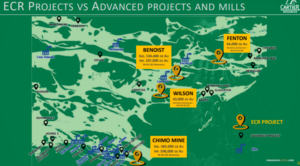
On March 22nd, Cartier halted trading in its common shares for a pending press release.
Confirming suspicions, the pending news was the long-awaited, highly anticipated resource update for the Company’s flagship Chimo Mine Project. And to the delight of many long-term shareholders, the Company tagged an ounce-count north of 2 million ounces.
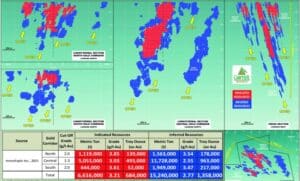
This new resource estimate consists of:
- 6,616,000 tonnes at an average grade of 3.21 g/t Au for a total of 684,000 ounces of gold in the Indicated category and;
- 15,240,000 tonnes at an average grade of 2.77 g/t Au for a total of 1,358,000 ounces of gold in the Inferred category.

The drilled meters backstopping this update, all within 500 meters of existing infrastructure, led to a resource roughly 20% higher than expected (the original target was 1.7 million ounces).
The resource estimate is constrained using DSO “ Deswik Stope Optimizer ” with a cut-off grade of 2.0 g/t Au for the North and South Gold Corridors and 1.5 g/t Au for the Central Gold Corridor and using a price of gold of USD 1,612 US / oz.
Work in progress, with the objective of optimizing the resources, are as follows:
- Industrial sorting tests of the mineralization aimed at increasing the grade of the pre-concentrated material before milling as well as the recovery rate at the mill resulting in reduced transportation costs to the mill and reduced costs of milling and environmental restoration;
- Internal engineering studies to develop and produce optimal mining design scenarios in order to minimize costs and recover as many ounces as possible within the 3 gold corridors of the property.
The potential to increase resources below and peripheral to the areas in the eastern sector of the property (FIGURE) is significant. In addition, the potential to increase resources below and peripheral to all of the gold zones on the property remains open.
As a reminder, the Chimo project has:
- A vertical shaft down to 920 meters;
- 7,000-plus meters of horizontal drifts on 19 levels;
- A powerline within 300 meters of the deposit;
- 6 mills within trucking distance of the deposit;
- Access to a large, experienced workforce.
Bottom line: Chimo can be fast-tracked to production.
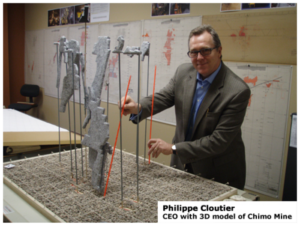
Regarding this new ounce-count, I know what some of you are thinking: what’s with the varying cut-off grades —2.0 g/t Au for the North and South Gold Corridors and 1.5 g/t Au for the Central Gold Corridor?
Fair nough.
The North and South Corridors host higher-grade mineralization, but the mineralized zones are narrower—5 to 10 meters in width.
The Central Corridor is wider, and might best be described as a bulk tonnage deposit i.e. 2.5 g/t Au over 45 meters.
You might think that these grades are on the low side for an underground mining operation but it’s important to note that Agnico Eagle is currently mining ore 1.6 kilometers below the surface at a grade of 1.5 g/t Au, using a 0.9 g/t Au cutoff.
As per the bolded quote further up the page, Chimo still has room to grow.
Philippe Cloutier, Cartier’s CEO:
“These significant resources of the Chimo Mine property will be accessible via the restoration of existing underground infrastructure located within trucking distance to several mills. The Val-d’Or area infrastructures and its qualified work force constitute a considerable advantage for the rapid start of this mining project. Finally, the historic metallurgical and mining experience of the project will facilitate designs.”
The following 12-minute interview with CEO Cloutier offers a number of additional insights re Chimo and this glossy new ounce-count.
Cartier’s CEO Comments on Chimo’s Updated Resource Estimate
CEO Cloutier isn’t willing to venture a time estimate, but a PEA for the Chimo deposit is on deck.
Another potential price catalyst for the stock may include drill results from the Benoist Project where two drill rigs are currently active (Benoist will see 30,000 meters of drilling in multiple phases).
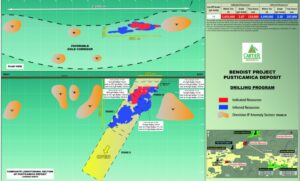
The Company’s Fenton Project may also come into play in 2021.
Having entered into a dynamic new phase of development, the Company currently has $11M in its coffers.
And of course, Cartier remains near the top of my list as a potential takeover target by any number of resource-hungry predators.
Forum Energy Metals (FMC.V)

Forum is currently drilling on two key projects with deep-pocketed partners footing the bill.
Forum’s 38,250 hectare Janice Lake Cu-Ag Project, located in north-central Saskatchewan, is the flagship.
In mid-February, JV partner Rio Tinto Cda commenced drilling at the Rafuse target, a 2.8-kilometer (priority) target of surface copper mineralization developed during a summer-of-2020 mapping, prospecting, and geophysical campaign.
There are currently two rigs turning at Janice Lake.
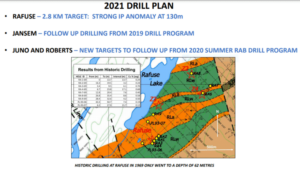
The 14,205 hectare Fir Island Project, located in the prolific Athabasca Basin, is also getting a proper probe with the drill bit this winter—roughly 5,000 meters in 24 holes.
The Fir Ilse program is operated by Forum and funded by Orano Canada—Orano can earn up to a 70% interest by spending $6 million on exploration.
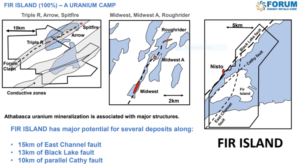
We’ll have to keep an eye on how this winter phase plays out. I’m hearing the Spring may come early to the region.
Love Lake, where the Company is defining a number of compelling targets for an upcoming drilling campaign, bears geological similarities to North American Palladium’s Lac Des Isle deposit in the Thunder Bay region of Ontario, and Chalice Gold’s Julimar discovery in Western Australia.
Note the Roadside anomaly, a high-priority drill target—Highway 905 runs right through the center of it…
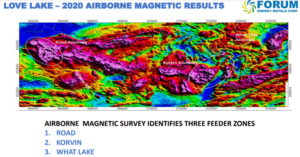
On March 22nd, the Company dropped the following headline pertaining to yet another prospective property in the Company’s project pipeline—the 11,067 hectare Wollaston Uranium Project:
Forum Plans Uranium Exploration on Its Wollaston Project, Saskatchewan
Here, the Company announces plans for a gravity survey this April on the 11,067-hectare project.

Forum’s CEO, Rick Mazur, had been keeping his eyes on this project for some time, and last April it came open, so he grabbed it.
Forum staked the current claims less than a year ago based on 40+ years of uranium exploration experience in the selective identification of the highest potential conductive trends that remain untested or under-explored. A compilation of historic drilling, geophysics and prospecting on the project have outlined over 30km of prospective conductive trends, several unexplained uranium boulder trains on surface and a number of untested drill targets. The gravity survey will identify areas of alteration associated with uranium mineralization.
The Wollaston Uranium Project is located along the margin of the Athabasca sandstone basin and boasts both road and power access, along with its proximity to two uranium mills and ten mines/deposits within 35km of the property. The target mineralization is shallow, basement-hosted uranium such as the Eagle Point deposit (140,000,000 lbs. uranium) found at the Rabbit Lake mine site 25km to the north.
CEO Mazur believes historical work on the project missed what he believes are now obvious targets.
Ken Wheatley, VP of Exploration:
“Along with our exploration endeavors at Fir Island (uranium, funded by Orano), Janice Lake (copper, operated by Rio Tinto Canada Ltd) and Love Lake (nickel/PGM), the Wollaston Project is an important new addition to Forum’s portfolio. Our goal here is to find a uranium deposit that can be used to feed a couple of mills just up the road that will be hungry in about 10 years time.”
This season’s work will include a gravity survey scheduled to commence next month.
Btw, the Company now trades south of the border under the symbol FDCFF.
HighGold Mining (HIGH.V)
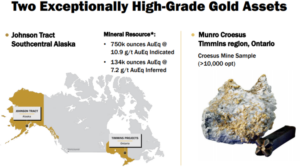
Highgold’s district-scale Johnson Tract Project (JT) in coastal southcentral Alaska is the flagship.
JT boasts an Indicated resource of 750,000 ounces AuEq at a grade of 10.93 g/t AuEq and an Inferred resource of 134,000 ounces AuEq at a grade of 7.16 g/t AuEq.
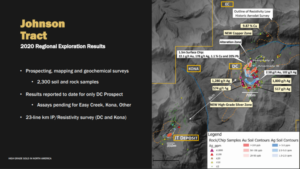
Though JT currently bears flagship status, the Company’s (growing) Munro-Croesus Gold Project in the Timmins Gold Camp of Ontario is being explored for its high-grade gold potential.
The Timmins camp is located in the heart of the Abitibi greenstone belt, a prolific mining jurisdiction with over 200 million ounces of historical gold production.
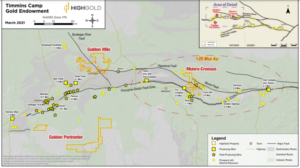
On March 10th, Highgold dropped the following headline:
Interestingly, the geo-sleuths at Highgold are now talking about VMS. With a project of this scale and pervasive alteration, it shouldn’t come as a surprise that VMS’ has entered the fray.
This news release contained results from the Northeast Offset Target—two drill holes—from the southernmost of three drill cross-sections completed during the 2020 field season.
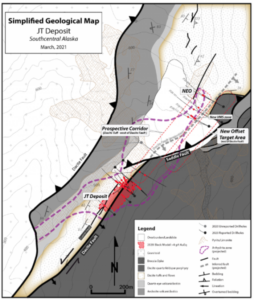
The two drill holes:
- 7.8 meters at 6.1% Zn, 1.6% Pb, 0.2% Cu, 0.7 g/t Au, 36 g/t Ag (9.8% ZnEq), including
3.9 meters at 9.1% Zn, 2.3% Pb, 0.3% Cu, 0.8 g/t Au, 47 g/t Ag (14.0% ZnEq) in hole JT20-114;
- 2.0 meters at 13.2% Zn, 0.6% Cu, 0.3 g/t Au, 5 g/t Ag (15.4% ZnEq), including
1.0 meter at 19.4% Zn, 1.1% Cu, 0.5 g/t Au, 9 g/t Ag (23.0% ZnEq) in hole JT20-112.
This press release went on to highlight several important developments at Johnson Tract, including:
- the identification of new VMS-style mineralization at NEO in hole JT20-114;
- the recognition that mineralization is far more widespread between the JT Deposit and NEO within the prospective Dacite Tuff stratigraphy than previously understood; and
- the alteration and mineralization at NEO itself does not represent the fault-displaced equivalent of the JT Deposit as previously thought, but instead, it is a second distinct zone of mineralization located on the same western side of the Dacite Fault as the JT Deposit (images above and directly below).
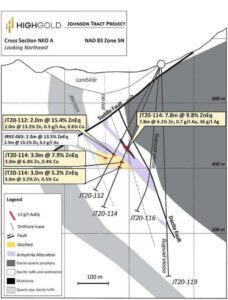
The Company continues to refine the working geology and alteration 3D model for Johnson Tract with plans for additional evaluation of these prospective new targets. The updated geologic model identifies areas east and south of the 2020 NEO drilling for potential fault displaced extensions of the JT Deposit. This includes a 600-meter long, poorly tested corridor between the JT Deposit and the original NEO target that will be a focus for drilling in 2021.
Darwin Green, HighGold’s CEO:
“These advancements in our understanding of the Johnson Tract geology represent a significant turning point for the Project as they highlight the potential for mineralization anywhere within the key Dacite Tuff host stratigraphy northeast of the JT Deposit. Equally important, it means that the 2020 NEO drilling was centered too far to the west and the true target for the fault displaced offset of the main deposit still lies farther to the east. Drilling of this more easterly target in 2021 will focus along a 600m long gap between the main JT Deposit and NEO, which has, as yet, been subject to little to no testing. This refined offset target is in addition to JT Deposit expansion targets (building on the success of 2020), other Dacite Tuff hosted targets including the new VMS-style mineralization, and new discovery-focused regional prospect targets, all of which will be drill tested in 2021.”
On March 22nd, the Company released results from a surface sampling program that included reconnaissance-level mapping, prospecting, and geochemical (surface) sampling.
This ambitious field campaign—designed to evaluate prospects on a regional scale—ran concurrent with the 2020 drill program.
HighGold Identifies Regional Gold-Bearing Structure at Johnson Tract Project, Alaska, USA
These results include rock and soil samples from prospects surrounding the main JT Deposit, including the Milkbone Prospect and the Easy Creek Prospect. Both prospects are spatially associated with a six-kilometer-long regional structure—referred to as the “Milkbone Fault”—that transects the northern portion of the Project (map below). Additional high-grade rock sample results for the Difficult Creek Prospect are also reported herein.

Surface Sampling Highlights
Milkbone Results
“A reconnaissance soil line collected across the trace of the north-south trending Milkbone Fault has identified a strong gold-in-soil anomaly with supporting high-grade rock sample results from near-source boulders and subcrop. The soil line crosses a large gossaneous alteration zone, located 400 meters west of the new High-Grade Ag-Au Vein Field recently announced at the DC Prospect (see Company press release dated February 11, 2021).”
Highlight assay results include:
- 184 g/t Au, 46 g/t Ag, 20% Pb, 2.1% Zn, 0.1% Cu in a grab rock sample;*
- 5.2% Zn and 0.4 g/t Au in a grab rock sample;*
- Gold-in-soil values ranging from 70 ppb to 4,390 ppb (4.39 g/t Au) over a 150-meter wide zone.
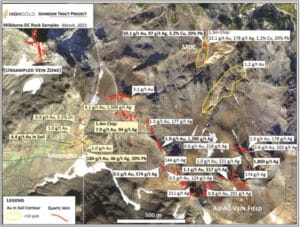
Easy Creek Results
“A 1,500 meter x 1,000 meter gold-in-soil anomaly (20 ppb to 1,610 ppb gold) +/- copper +/- molybdenum has also been identified at the northern end of the Milkbone Fault at the Easy Creek prospect.”
Highlight assay results include:
- 1.3 g/t Au and 0.9 g/t Au/0.92% Cu in individual grab rock samples;*
- Gold-in-soil values ranging from 70 ppb to 1,000 ppb (1 g/t Au) within a 350-meter diameter area surrounding a biotitic quartz-diorite intrusive with coincident copper-in-soil values ranging from 272 ppm to 1,805 ppm (0.18% Cu).
High-Grade Ag-Au Vein Field (DC Prospect) Results
“New high-grade gold and silver assays are reported for veins at the western end of the High-Grade Ag-Au Vein field at the DC Prospect, expanding it to more than 1,000 meters in length, including…”
- 1,500 g/t Ag and 4.1 g/t Au in a grab rock sample;*
- 7.9 g/t Au and 94 g/t Ag over 1.4 m in a rock chip channel sample.
*Note – grab samples by their nature are selective and not necessarily representative of the mineralization hosted in JT’s subsurface stratum.
Discussion of Results and Regional Gold-Bearing Structure
The Milkbone Fault is a 6 km long north-south fault that may represent an important regional gold-bearing structure in the northern portion of the Johnson Tract project. It is separate and distinct from the main JT Deposit area located several kilometers to the southwest.
The Milkbone Fault dips steeply to the west and in the Milkbone Prospect area places fresh andesite on the east side against silicified pyritized dacitic tuff on the west side. Rock sampling of sub-angular float encountered while soil sampling across the surface trace of the fault at the Milkbone Prospect returned up to 184 g/t Au, 46 g/t Ag, 20% Pb, and 2.1% Zn. Sampling of the adjacent silicified pyritized host rock returned 1.03 g/t Au and 1% Pb. The east-west contour soil line over the trace of Milkbone Fault returned gold-in-soil values ranging from 70 ppb to 4,390 ppb (4.39 g/t Au) over a 150-meter wide zone. The Milkbone Prospect soil anomaly is located 400m west of the western limit of the new +1000 long High-Grade Ag-Au Vein Field discovered at the DC Prospect.
The Milkbone Fault can be traced four kilometers northwards to the Easy Creek Prospect where recent contour soil sampling has identified a broad 1,500-meter x 1,000-meter gold-in-soil anomaly (20 ppb to 1610 ppb Au) and local elevated copper and molybdenum. A cluster of very high values was returned from a 350-meter diameter area circling a biotitic quartz-diorite intrusive, where 33 soil samples range from 70 ppb to 1000 ppb gold (average = 273 ppb Au). Overlapping copper-in-soil values range from 272 ppm to 1,805 ppm (0.18% Cu). Rock sampling along the soil lines returned highs of 1.3 g/t Au and 0.9 g/t Au/0.92% Cu in individual grab rock samples.
The soil anomalies at the Milkbone and Easy Creek Prospects are open to expansion and will be a focus of additional follow-up during the upcoming 2021 field season. Along with the recently defined +1000m long Ag-Au Vein Field at the DC Prospect, multiple promising new targets have been identified for future discovery focused drilling.
The Company continues to process incoming data from the 2020 field season, including the inversion of DCIP geophysical data collected from the DC and Kona Prospects and additional rock sample data.
CEO Green:
“We are extremely pleased with the regional picture emerging at Johnson Tract with recent surface exploration results now defining widespread, robust and diverse styles of mineralization over an area several square kilometres in size. We are looking forward to drill testing several of these new prospects for the first time in our upcoming 2021 field season while also methodically expanding our high-grade JT Deposit cornerstone resource (750koz at 10.9 g/t AuEq Indicated).”
If you were fretting about not having taken a piece of HighGold earlier last year, before the big run-up to the $3.00 level, current levels may offer a similar opportunity.
Assays remain outstanding for 10 drill holes from the 2020 campaign and will be released in batches as they are received and evaluated.
I’m looking forward to the drill plan for the 2021 JT field season.
Kuya Silver (KUYA.V)
Kuya operates the Bethania Project, inclusive of the Bethania Silver Mine, located in Central Peru.

This 1,750-hectare project is located over the Cordillera Central, a region known for its prolific base and precious metals belts.
Geologically, the area is host to numerous styles of mineralization, including epithermal Au–Ag, porphyry Cu-Au-Mo, and replacement/skarn Zn-Cu. The Bethania mine is located along an interpreted north-northeast fault line within Southern Peru’s Au–Ag Epithermal Belt.
“The Santa Elena Concession (Bethania Mine) covers Tertiary volcanic rocks that include andesite, dacite and tuff. All of the mineralized veins discovered to date are hosted by altered andesite and/or dacite with some anomalous mineralization hosted by silicious bodies of stockwork quartz-breccia.”
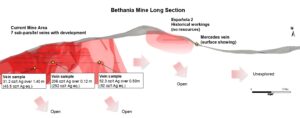
The high-grade nature of Bethania‘s epithermal veins—at roughly 17 ounces per tonne—should yield 2M ounces of silver per annum (2.7M AgEq) with the 350 tpd processing plant the Company intends to build.
Bethania promises to be a low-cost/high-margin producer with a low initial CapEx of US$10M.
All-in sustaining costs are expected to ring in at roughly US$11 per oz, among the lowest in the industry.
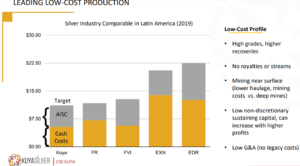
These robust economics should see payback within six months or less.
A March 18th headline:
Kuya Silver Launches Initial Bethania Drill Program
Here, the Company announced the launch of a 5,000-meter drill program at Bethania.
The first diamond drill rig is now on site with two additional rigs expected to arrive in the coming weeks.
This initial program will be split into two parts, approximately 4,000 metres are planned for the western third of the property testing all seven veins that make up the historical resource (see the Independent Technical Report on the Bethania Silver Project, dated August 29, 2019 and filed October 1, 2020 under the Company’s profile at www.sedar.com). The assays and geotechnical measurements taken from this portion of the drill program will be used to complete the underground mine production plan, including an expansion from 100 tonnes per day to 350 tonnes per day. In addition, Kuya expects to complete a National Instrument 43-101 technical report, including a resource estimate on completion of the drill program.
The remaining 1000 metres will target the Española 2 area in this initial phase to confirm the extent of historical mining from the Española 2 adit, as well as testing other newly identified veins at surface that may be related to this mineralization. This series of drill holes is to be located approximately 900 metres east of the main adit and could substantially extend the strike length of the Bethania vein system.
David Stein, Kuya’s CEO:
“Starting this very exciting drill program is a huge accomplishment for Kuya’s team in Peru. Given the recent challenges with COVID-19, our team’s ability to assemble the logistics and expertise required for this program has been a significant undertaking. The first phase of the drill program is just the beginning, designed to provide data that will allow us to confirm and complete our underground mine plans as well as to begin to test the depth extension of the veins below the mine workings. Upon completion of this first program, we would look to step out even further along strike and at depth with our next phase of drilling. Internally, we have very aggressive resource growth targets that we will strive to achieve over the coming year.”
The Company also recently announced a new acquisition in the historic Cobalt, Ontario silver mining district—a development we’ll explore another day.
And, very briefly…
Pure Gold (PGM.V)
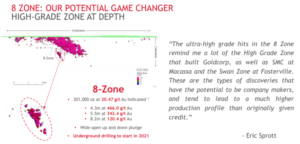
Earlier this month, Pure Gold dropped the following headline:
PureGold Mine Ramp-Up Progressing Steadily
The market appears to be in a ‘wait n see’ mode, waiting to see how the ramp-up-to-commercial-production phase ultimately plays out.
“With the steady progress of mining and milling performance throughout the ramp-up period toward the design production rate of 800 tonnes per day, the Company currently anticipates declaring commercial production at the PureGold Mine in Q2 2021. Inaugural production and cost guidance for the balance of 2021 will follow shortly thereafter.”
That production and cost guidance headline will be a closely watched event.
END
—Greg Nolan.
Full disclosure: Highballer does not currently have a business relationship with any of the companies featured in this article. The author owns shares of Defense, Cartier, Forum, Highgold, and Pure Gold.
